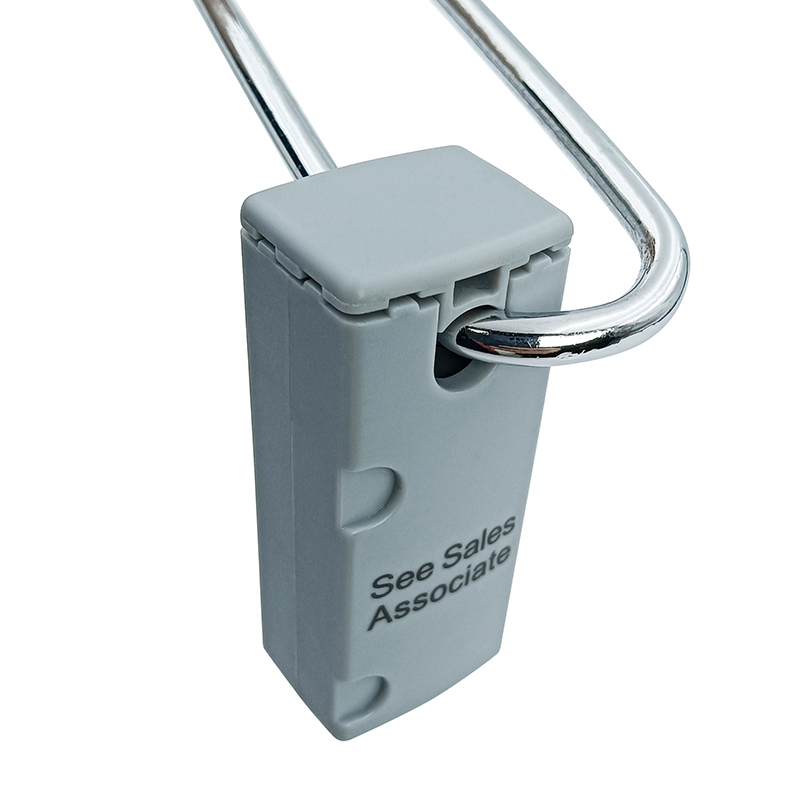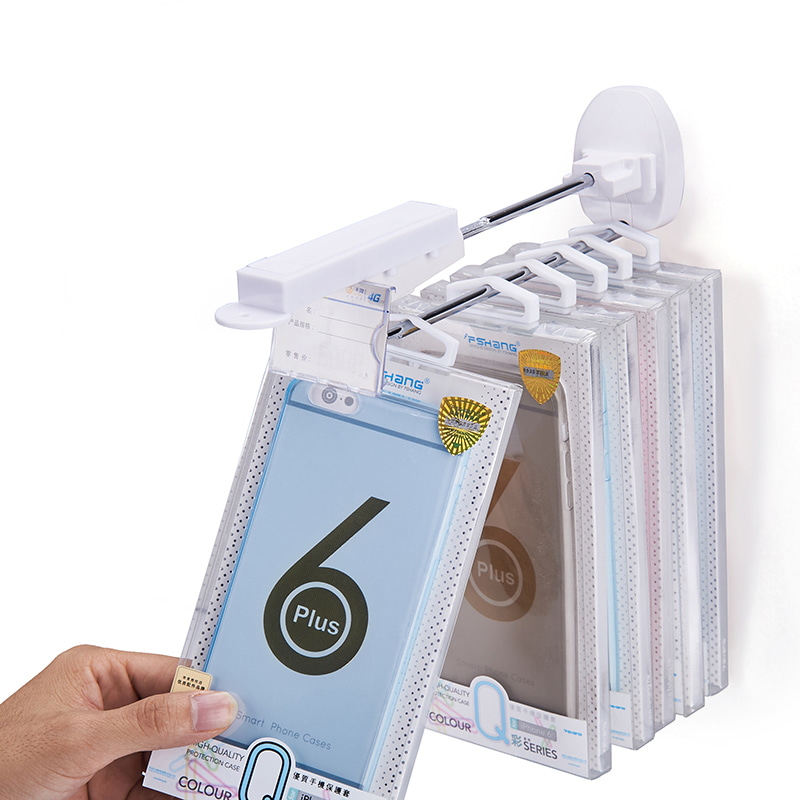Why is Hanging Merchandise Security becoming critical for retail theft prevention?
2025-10-24
Table of Contents
-
How does Hanging Merchandise Security address retail challenges?
-
Why choose effective solutions like Locking Hook and StopLok?
-
What are the key product parameters and selection criteria?
-
How to implement and optimise Hanging Merchandise Security in your store?
-
Frequently Asked Questions (Hanging Merchandise Security)
-
About the brand and next steps
How does Hanging Merchandise Security address retail challenges?
Retailers face increasing loss from theft, especially when products are hung on peg-hooks, slat-walls, or open displays. The concept of Hanging Merchandise Security refers to mechanical or electronic control systems designed specifically for merchandise displayed on hooks or hanging fixtures. These systems aim to strike the balance between accessibility for genuine customers and deterrence of shoplifters or casual “sweeping” of merchandise.
When items hang freely on hooks, they become vulnerable to rapid removal, “sweeping” (bulk grabbing) or even removal of hooks themselves. By deploying specialised locking hooks, dispensers, or stop-locks, retailers can reduce shrinkage, improve inventory accuracy, and maintain an open display experience. For example, one study cited under the product “Helix” noted a shrink reduction of up to 82 % and a sales increase of 32 % in four product categories.
Why choose effective solutions like Locking Hook and StopLok?
When selecting a solution for hanging merchandise, there are key considerations:
-
Accessibility vs security: You want customers to freely browse but you don’t want a thief to remove a dozen items in seconds. Solutions like the InVue Locking Hook provide secure access with a controlled key system.
-
Versatility to mount on common fixtures: Many hooks hang from pegboards, slatwalls or wire grids. A system that adapts to existing display infrastructure is more cost-efficient. For example, the InVue StopLok is described as working with “any non-secure hook”.
-
Ease of restocking by staff: Retail operations must restock quickly. A security system must allow store associates to access the merchandise efficiently, while still limiting unauthorised removal. The Helix product emphasises this.
-
Loss prevention impact: Studies and case-studies matter. The Helix product referenced above demonstrates measurable shrink reduction and sales uplift.
-
Budget & compatibility: Some solutions will cost less but offer lower security. For example, StopLok is noted as “budget-friendly” for standard hooks.
Segment focus on two solutions:
Locking Hook
This solution is designed for higher-security hanging displays. It secures the merchandise hook itself and requires a key (or authorised access) for removal. The merchandising team can display items openly, but the hook cannot be removed easily, reducing risk of theft.
StopLok
This is positioned for standard peg hooks, providing a secure attachment without replacing the hook entirely. It’s ideal where budget is constrained or hook infrastructure is already in place. It integrates with the OneKEY™ ecosystem (for InVue) so that staff can use one key across many display locks.
What are the key product parameters and selection criteria?
To present professional credibility and assist decision-making, here is a table of typical product parameters one should compare when evaluating hanging-merchandise security systems:
| Parameter | Description | Why it matters |
|---|---|---|
| Mounting Type | E.g., pegboard, slatwall, grid-wall, tubular hooks | Ensures compatibility with existing store fixture infrastructure |
| Hook/Lock Access Mechanism | Keyed lock, one-key system, time-delay dispenser | Determines how staff access merchandise and how thieves are deterred |
| Security Level | e.g., anti-sweep, hook cannot be removed, lock resistant materials | Higher security generally equals lower shrinkage |
| Restock Efficiency | How quickly staff can restock items versus normal hook | Minimises labour impact and ensures display stays full |
| Unit Cost / Retrofit Cost | Cost per hook or lock, plus installation time | Budgeting and ROI depend on these figures |
| Impact on Customer Experience | Does the locking system create friction? Is the display still open? | Customer convenience must be maintained to avoid reducing sales |
| Maintenance & Key Management | How many keys, how often servicing is required | Operational overhead matters for long-term adoption |
Here is a sample table of two actual product types (based on available data) for illustration:
| Product | Mounting Type | Access Mechanism | Security Feature | Use Case |
|---|---|---|---|---|
| Locking Hook | Pegboard or slatwall | OneKEY™ key access | Hook locked to fixture; cannot pull off without key | Premium accessories, high-theft risk items |
| StopLok | Standard peg hook retro-fit | OneKEY™ key access | Locks existing hook in place, prevents hook removal | Cost-effective protection for hanging items |
By evaluating these parameters across your store’s hanging merchandise zones, you can prioritise where investment yields greatest shrink reduction and operational benefit.
How to implement and optimise Hanging Merchandise Security in your store?
A. Assessment and Planning
Start by identifying all hanging merchandise locations: peg-hooks, slatwalls, grid-walls. Review theft/shrink data: which hooks or displays show the highest losses? Which merchandise is most vulnerable? Use this data to prioritise.
B. Solution Selection
Based on the parameters above, select appropriate security systems. For high-value items or high theft zones, opt for Locking Hook. For standard items or cost-sensitive zones, choose StopLok or similar systems. Ensure compatibility with existing fixtures and key systems.
C. Installation & Staff Training
Install the locks/hooks in display zones. Train staff on how to restock, how to use the key/access system, and how to monitor displays. Make sure restocking is efficient so that merchandise isn’t left empty.
D. Monitoring & Adjustment
After installation, monitor shrinkage trends, restocking efficiency, customer feedback and display availability. Use data to adjust: perhaps expand to other zones, or switch to higher security solutions where creep in theft continues.
E. Customer Experience Management
Ensure that while security is improved, the merchandise remains accessible and visually engaging. Over-securing may impede browsing or degrade customer experience. Striking the right balance is key.
F. Continuous Improvement
Loss prevention is ongoing. As merchandising patterns and theft techniques evolve, revisit your hanging-merchandise security strategy periodically. Use feedback loops from sales teams, loss-prevention data and fixture vendors.
Frequently Asked Questions (Hanging Merchandise Security)
Q: What types of hanging fixtures can Hanging Merchandise Security systems work with?
A: These systems are designed to integrate with pegboards, slatwalls, grid-walls and standard peg hooks. Many products support retrofit of existing hooks (e.g., StopLok) while others replace the hook (e.g., Locking Hook) for higher security.
Q: Will adding security locks to hooks slow down restocking or inconvenience staff?
A: Properly selected systems are designed for minimal restocking friction. Staff can access locked hooks with keys or authorised access while the locking mechanism prevents unauthorised removal. For example, some time-delay dispensers release one item every few seconds, allowing controlled access while maintaining display fullness.
Q: How much shrinkage reduction can we expect by using Hanging Merchandise Security?
A: While individual store results vary, case-studies like the Helix solution show shrink reductions up to 82 % in targeted categories and sales increases of over 30 % when the display remains efficient.
About Pyets and Next Steps
At Pyets, we specialise in delivering highly effective hanging-merchandise security solutions that combine robust mechanical design, compatibility with common fixtures, and operational ease. By choosing Pyets, you gain a partner experienced in retail loss-prevention optimisation and fixture systems.
When you’re ready to move forward, contact us to schedule a store-walk audit, fixture compatibility check, and tailored roll-out plan. We’ll guide you in selecting the right combination of Locking Hook and StopLok (and other hanging-merchandise security devices) for your retail environment.





